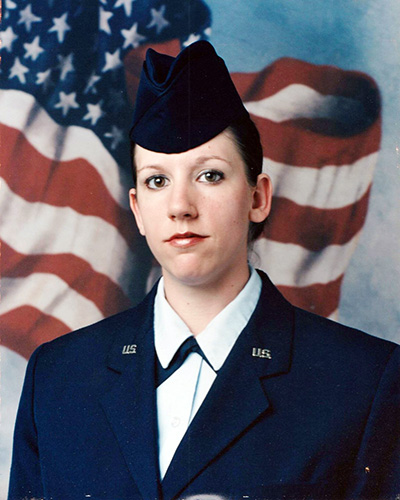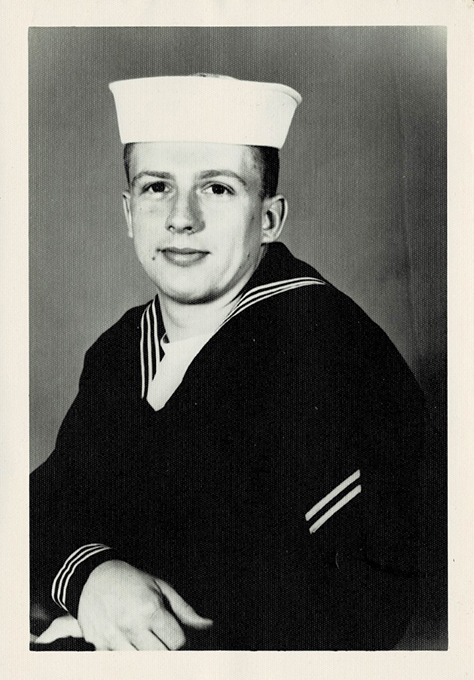Airman First Class Ballenger
From Rocky Ridge to Japan …and Beyond
by Richard D. L. Fulton

Life-long Rocky Ridge resident, Emily Ballenger (pictured right), during a short two-year span during which she lived in Texas, decided to seek out a career move, and subsequently signed on with the United States Air Force.
Ballenger is the daughter of John and Linda Ballenger, owners of Buck Forest Farm in Rocky Ridge, which now also serves as her home. Her father served aboard the aircraft carrier U.S.S. Saratoga in the 1960s. Her brother, John “Jay” Ballenger, served in the Army in Afghanistan.
Ballenger signed up for the air service in Dallas in 2003 and trained at the Lackland, Texas, Air Force boot camp in Bexar County, Texas, for a half dozen weeks before being assigned to Keesler Air Force Base in Biloxi, Mississippi.
Ballenger spent eight weeks in Biloxi, six weeks training and two additional weeks awaiting an assignment. When the assignment came through, she found herself enroute to Misawa Air Base, located in the northern part of the island of Honshu in Japan, where she was attached to the 35th Communication Squadron which is a component of the 35th Mission Support Group, 35th Fighter Wing.
The base is a joint service installation and houses three United States military services—Air Force, Navy, and Army—as well as the Japan Air Self-Defense Force. Ballenger noted that there were also American Marines located there.
She served as an Air Force administrative assistant/information manager. Ballenger described the installation as a “fairly large base… nicely laid out,” which was “very quiet.” She said the base was being constantly upgraded throughout the time she was there.
She was able to spend some time touring, her main form of off-base entertainment, and even purchased a motorcycle there for simply getting around, touring the area. “I loved it in Japan,” she said, adding, “The culture there is amazing.”
Ballenger said that particular area of Japan is primarily agricultural, which made her feel more “at home” (the Buck Forest Farm being some 140 acres in size). The town of Misawa, she said, was about the size of Thurmont, noting, “It was so nice. It was like being at home.”
She served in Japan two years before being discharged and sent home. The only downside to her service in Japan was contracting “stress-related arthritis and fibromyalgia, which resulted in her having been diagnosed as being 50 percent disabled.
Ballenger was honorably discharged from the Air Force at Misawa Air Base in August 2006.
Following her return to the United States, Ballenger served as a photographer for the (now defunct) Emmitsburg Dispatch, photography being among her obsessions. She now runs her own photography business, Twilight Photography, primarily focusing on outdoor events and subjects.
“My love of photographing nature and horses brought me to share my passion with others,” she said, adding, “I would have to describe my photography style as a bit of photojournalism mixed with fine art and a sprinkle of spontaneity.”
Her other obsession includes horses. Her home, Buck Forest Farm, served as a boarding facility for horses for many years. Presently, Ballenger also offers riding instructions, and currently has three horses of her own.
She said her experience in the Air Force has “taught me a lot about integrity and working hard.” As an administrative business professional, she learned skills related to initiating and managing a business.
For more on Ballenger’s Twilight Photography, visit twilightphotographymd.com. For riding lessons, contact Emily Ballenger at 301-473-1504.


